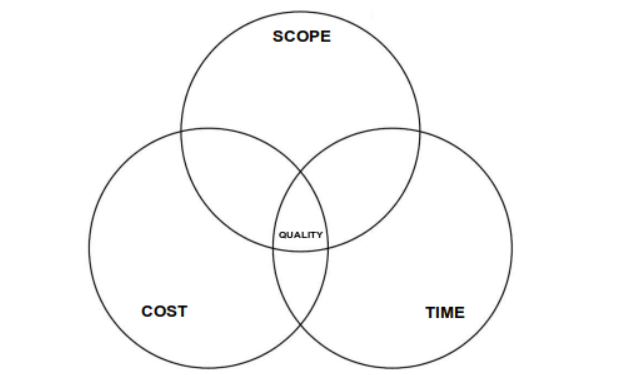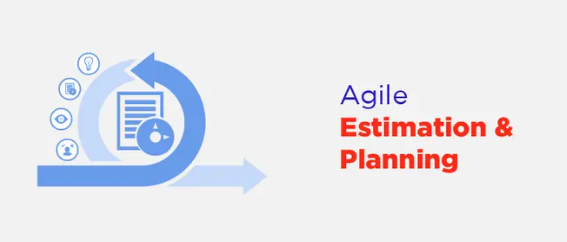The triple constraints, also known as the project management triangle, are the three main restrictions on any project. It’s obvious that these are scope, time, and cost. Often called the iron triangle, the project manager needs to balance these for the project to succeed. Remember that balancing these can prevent problems like scope creep, which affects the project scope.
It’s understandable that the project scope is about the specific goals, deliverables, and tasks of the project. Additionally, project time, or schedule, is the timeframe for completing the project along with the project costs which are the financial resources set aside for the project.
Introduction to project management triple constraint
It is well known that the Triple Constraint, often shown as the project management triangle is a key concept in project management. The amazing thing is that it shows the relationship between three important parts of any project:
- Project scope
- Project time
- Project costs
It’s interesting that the project manager needs to balance these constraints to make sure the project succeeds. The parts of the project triangle can greatly affect the project schedule, project tasks, the project budget. The triple constraint triangle is often seen as a measure against scope creep.
Definition of project management triple constraint
It is a matter of fact that the Project Management Triple Constraint is a framework for balancing project tasks, project costs, and project time. At each point of the triangle are the key constraints: scope, time, and cost. It’s obvious that how well the project manager can manage these constraints largely determines the success of the project.

The ‘triple constraint triangle’ refers to changes to one constraint often affecting the others, often causing a ‘scope creep’. It’s vital to understand that the project manager’s job is to find a balance among these constraints.
The importance of triple constraint in project management
It is no surprise that the triple constraint or the project management triangle is key in creating a good balance between project costs, project time, and project scope. Its importance is in controlling project tasks, which sets clear project deliverable and a detailed project schedule. The interesting thing is that the triple constraint triangle helps the project manager in outlining a precise project budget, and maintaining cost efficiency.
However, the project manager must be ready for ‘scope creep’, an uncontrolled growth in scope, which can disrupt the organization of the iron triangle. So, we can arrive at the conclusion that effective project triangle management is vital in securing an effective, budget-friendly, and timely completion of any project!
Exploring the three elements of triple constraint
It’s interesting how the Iron Triangle or the Project Management Triangle is a valuable model for project managers. The triangle shows the three main elements of the triple constraint triangle, namely
- Project scope
- Project time
- Project costs
It’s crucial to understand that the project scope is the detailed set of deliverables or features of a project. Additionally, project time is the schedule that includes the start and completion dates of a project, while project costs involve the budget allocated for the project.
Among the benefits is that properly balancing these three constraints contributes a lot to project success. However, the negative thing is that any changes in one element could affect the others. As a result, it may lead to significant change of the project deliverable.
Time: The first element of triple constraint
It comes with no surprise that project management often focuses on the triple constraint triangle. Time is very important and needs careful planning and management by the project manager. In addition, the project schedule is a key tool in assigning tasks and helps predict if the project will succeed.
It’s interesting how the iron triangle shows the interaction and dependence between the elements of the project triangle. These are project time, tasks, and budget. What’s more interesting is that any change, delay, or scope creep in one task can affect the whole project’s delivery time! This means there’s a need for timely control measures and constant monitoring.
Scope: The second element of triple constraint
Another crucial element and the second element of the triple constraint triangle, is the project scope. It is obvious that this defines what the project aims to achieve.
At the same time, it outlines the specific activities, processes, and tasks that need to be done.
It’s sad that handling the scope incorrectly or poorly can lead to scope creep, and, therefore, this can disrupt the project schedule and increase project costs. Without a shadow of doubt, it is proven that it’s critical to control the scope properly for the project to succeed and to stay within the project budget.
Cost: The third element of triple constraint
We know that cost is a key element of the project management triangle that directly affects project success. Note that it refers to project costs, and this includes all financial resources needed for execution.
It’s obvious that as a part of the triple constraint triangle, cost is linked with time and scope. The amazing thing is that scope creep, an increase in project deliverables without corresponding adjustments in time or cost, can greatly increase the project budget. And the good news is that an effective cost management ensures tasks are completed on time within the set budget.
Interrelationship between time, scope, and cost
It’s so obvious that the scope is what the project aims to achieve. What’s interesting is that it includes all the work needed to deliver the final outcome of the project, which is the project deliverable.
To add on, time is the project schedule, which is the time set to complete all the project tasks. And it was discussed that cost includes the project budget or the estimated costs linked with the project activities.

It’s essential to remember that for a project to succeed, a project manager needs to manage these related aspects effectively. A vital thing that many people doesn’t understand that any changes in any one element can affect the others. And the sad thing is that this could potentially lead to scope creep if not monitored carefully.
How changes in one element affect the others
It has been discussed earlier that changes to one of these elements (Scope, time and cost) will inevitably affect the others. Likewise, it is a sad reality that expanding the project scope often leads to increased costs and extended project time.
Remember, the project manager must manage these elements carefully to ensure project success. This includes preventing ‘scope creep’, which is when project tasks expand beyond the original project schedule and budget.
As a result, the ‘triple constraint triangle’ is a very important tool in controlling project deliverables along with understanding the interrelation of various project constraints.
Striking a balance between time, scope, and cost
There is no doubt that balancing three factors, i.e. Time, scope and cost; is very important for every project manager to make sure the project succeeds. For example, expansion of the project scope can lead to an increase in costs or time, which is known as scope creep.
Managing the triple constraints in project management
In underpinning successful project management, understanding the concept of the project management checklist is crucial. This is because it helps in comprehensively detailing out all the elements involved in a project. Its alliance with the triple constraint of project management helps ensure the project stays on schedule, within budget, and meets the defined scope.
It is not surprising that in project management, triple constraint triangle is used to identify and manage project constraints. And, as was discussed earlier, these constraints greatly affect the success of the project.
Note that as the project manager, one must manage the project schedule, budget, and tasks efficiently. This is to prevent scope creep, which is when the project scope expands beyond its original objectives. Among the benefits of balancing these elements is that it ensures that the project deliverable meets the desired quality within the specified budget and timeline.
Effective planning and estimation
We know that effective planning and estimation are crucial for project success. And the amazing thing is that the triple constraint triangle emphasizes the balance between project costs, time, and scope.

Furthermore. the role of a project manager is to set up a viable project budget and schedule. They define project tasks to make sure deliverables meet project scope and to control ‘scope creep’ too.
Bonus Tip: Expected constraints should be forecasted and managed within the project triangle to ensure a clear path towards project success.
Regular monitoring and control
It’s a reality that effective project management depends on regular monitoring and control. It’s interesting that the project management triangle is a vital parameter that the project manager must balance. It should be balanced to make sure the project succeeds. Among the benefits of the iron triangle is that it helps monitor project tasks and predict project constraints.
The good news is that regular monitoring can prevent scope creep. This is an uncontrolled growth in project scope that can derail a project. The best thing is that just by closely inspecting project deliverables and sticking to the triple constraint triangle, project managers can efficiently control time, cost, and scope!
Managing changes and risks
It’s crucial to note that the project manager should always monitor the project triangle. At the same time, it should not be forgotten that change and risk management are key to project success.
It is a matter of concern that various risks may affect the project schedule, over-bloat the project budget, and more such things. But the good news is that regular audits and reviews can help in reducing risks and managing changes.
Role of project management tools in managing triple constraints
Managing projects successfully often boils down to a keen understanding of the triple constraint: time, cost and scope. An effective tool to ensure the 'time' element is properly accounted for, with particular relevance for creative agencies, can be found in this time tracking software. Remember, successful project completion is contingent upon setting realistic expectations in the balance of these three constraints, aided by appropriate tools.
It’s a well known thing that the Project management tools are crucial. They manage the project management triangle too. These tools help a project manager. And the interesting thing is that they track and control the triangle elements. As a result, this contributes to project success.

These tools have three main roles. First, they help in defining and scheduling project tasks. At the same time, they establish clear project deliverables while avoiding scope creep.
Second, they help in budget management, maintain as well as control project costs.
Third, they help in managing project time. And the great thing is that they offer solutions for efficient task assignment and schedule creation as well.
Microsoft Project: A comprehensive project management tool
Microsoft Project, a comprehensive tool, assists project managers in organizing, along with maintaining project deliverables. Plus, it manages project tasks and the project schedule. And the outcome is that this controls the project time effectively while providing a clear view of the project budget.
It’s interesting how Microsoft Project is known for modeling the project management triangle. Moreover, it visually represents the project scope, time, and costs and these are key to project success.
Asana: Simplifying task management and collaboration
Asana simplifies project management. The cool thing about this tool is that it fosters team collaboration. Asana addresses the project management triangle. Among the key benefits of using this tool is tha it balances project costs, project time, and project scope.
With Asana, a project manager can control project schedules and budgets. What’s interesting is that the system makes managing project deliverables easier. It also addresses project constraints which makes collaborative work more efficient.
Trello: Visualizing project tasks and progress
It is very fascinating that how The project management triangle, a fundamental concept, is visualized with Trello.

Trello has a card-based interface. And the amazing thing is that it simplifies the tracking of project tasks and progress. At the same time.each task can be tagged with its project schedule and budget. Trello allows viewing all project deliverables at a glance. And the benefit of this is that this makes it an invaluable asset in modern project management.
Conclusion: Mastering the art of managing triple constraints
It is proved that managing triple constraints is a vital skill for project managers. It involves understanding and handling project management triangle elements. These include project costs, time, and scope. Balancing these elements can lead to project success. This is despite potential project constraints.
Note that achieving this skill involves monitoring the project schedule that involves adhering to the project budget. It also involves overseeing project tasks diligently. This allows for better management of scope creep, ensuring timely delivery of project deliverables. In a nutshell, we can arrive at the conclusion from this article that, “The project triangle offers a roadmap towards effective project management.”







